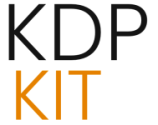Unlocking Your Publishing Potential: A Deep Dive into the Amazon KDP Dashboard

So, you’ve taken the plunge. You’ve written your masterpiece, polished it to a gleam, and uploaded it to Amazon Kindle Direct Publishing (KDP). Congratulations! That’s a monumental achievement in itself. But now, the real work – and the real excitement – begins: understanding and leveraging your Amazon KDP dashboard. This isn’t just a place to see your sales; it’s your command center, your analytics hub, and your gateway to understanding your readers and optimizing your publishing journey.
For many authors, the KDP dashboard can feel a bit like staring into the abyss. Numbers, charts, and various tabs can be overwhelming at first. But fear not! This comprehensive guide is designed to demystify every corner of your KDP dashboard, transforming it from a source of confusion into a powerful tool for growth and success. We’ll break down each section, explain what the data means, and offer actionable strategies to help you make informed decisions about your books.
The KDP Dashboard: Your Authorial Command Center
Think of your KDP dashboard as the cockpit of your publishing airplane. It provides you with all the essential information you need to navigate the skies of self-publishing. From tracking your royalties to understanding your book’s performance, this is where you’ll spend a significant amount of your time once your books are live.
Let’s start by getting acquainted with the main areas you’ll encounter:
1. The “Bookshelf” Tab: Your Digital Library
This is where all your published and in-progress books reside. It’s your digital library, a testament to your hard work and dedication. Each book listed here has its own set of details and options.
- Book Title: The name of your literary creation.
- Cover Image: A visual representation of your book’s genre and appeal.
- Status: This indicates whether your book is “Live,” “In Review,” “Draft,” or has other statuses like “Rejected.” It’s crucial to keep an eye on this to ensure your books are available to readers.
- Details: This section allows you to edit your book’s metadata – title, author name, description, keywords, categories, pricing, and more. This is arguably one of the most important areas to master, as good metadata is key to discoverability.
- Rights & Pricing: Here you can manage your book’s territories, choose your pricing strategy (including royalty options for ebooks and print books), and enroll in KDP Select if eligible.
- Reports: This is a direct link to your sales and royalty reports, which we’ll delve into in more detail shortly.
- Actions: Depending on the book’s status, you’ll find various actions here, such as “Edit,” “View Sales,” “Unpublish,” or “Order Proof Copies.”
Key takeaway: Regularly review your Bookshelf to ensure all your book details are accurate and up-to-date. Small tweaks to your description or keywords can sometimes lead to significant improvements in visibility.
2. The “Reports” Tab: The Heartbeat of Your Sales
This is where the magic – or the reality – of your publishing venture unfolds. The Reports tab provides a granular view of your sales, royalties, and other performance metrics. Understanding these reports is paramount to making informed decisions about your marketing and publishing strategy.
Let’s break down the key reports you’ll find:
a. Sales Dashboard
This is your high-level overview. It’s the first place you’ll likely look to see how your books are performing on any given day, week, or month.
- Units Sold: The total number of books (ebooks and print books) sold within the selected timeframe.
- Royalty: The amount of money you’ve earned from those sales.
- Kindle Unlimited (KU) Page Reads: For books enrolled in KDP Select, this shows the number of pages read by Kindle Unlimited subscribers. This is a vital metric for KU authors, as you earn royalties based on these reads.
- Sales Trends: Often presented as a graph, this allows you to visualize your sales over time. This is invaluable for identifying patterns, the impact of marketing campaigns, or seasonal trends.
- Best Seller Rank (BSR): While not directly in the Sales Dashboard, understanding your BSR is crucial. It indicates how well your book is selling compared to others in its category. A lower BSR generally means more sales.
Actionable Insight: Monitor your Sales Dashboard daily, especially when running promotions or new ad campaigns. Look for spikes in sales and try to correlate them with your marketing efforts. Also, pay attention to your KU page reads – if they’re consistently low, it might be time to re-evaluate your book’s positioning or marketing.
b. Royalty Report
This report provides a more detailed breakdown of your earnings.
- Units Sold by Title: See exactly which of your books are selling.
- Royalty Earned by Title: Understand the revenue generated by each individual book.
- Royalty Type: Differentiate between ebook royalties, print royalties (which can vary based on printing costs and list price), and KU page read royalties.
- Sales Location: Some reports might offer insights into where your books are being purchased, which can be useful for targeted marketing.
Actionable Insight: Use the Royalty Report to identify your top-performing books. These are the books you’ll want to focus your marketing efforts on, or perhaps use as a springboard for writing more books in that genre or series. If a particular book isn’t selling, investigate why – is it the cover? The description? The keywords? Or perhaps the book itself needs an update?
c. Transaction Report
This report offers the most granular detail, showing individual transactions.
- Date of Sale: When the sale occurred.
- Book Title: The specific book sold.
- Units: The number of units sold in that transaction.
- Royalty Amount: The exact royalty earned for that transaction.
- Customer Location: Information about where the customer purchased the book.
- Transaction Type: Whether it was a direct sale, a KU borrow, a pre-order, etc.
Actionable Insight: While it can be overwhelming, the Transaction Report can be useful for very specific analysis, such as tracking the impact of a specific promotional event on a particular day. For most authors, the Sales Dashboard and Royalty Report will be sufficient for day-to-day analysis.
d. Advertising Dashboard (if applicable)
If you’re running Amazon Ads, this dashboard is your best friend. It provides insights into your ad spend, clicks, impressions, and most importantly, your return on ad spend (ROAS).
- Campaign Performance: Track the effectiveness of your different ad campaigns.
- Ad Spend: How much you’re spending on advertising.
- Clicks and Impressions: How many times your ads were seen and clicked.
- Sales and Royalties from Ads: The revenue generated directly from your advertising efforts.
- ACOS (Advertising Cost of Sales): This is a critical metric. It’s calculated as (Ad Spend / Ad Sales) * 100. A lower ACOS means your advertising is more efficient.
Actionable Insight: Regularly review your Advertising Dashboard. If your ACOS is too high, you may need to adjust your bids, keywords, targeting, or ad creative. Conversely, if your ACOS is low and profitable, consider increasing your ad spend to reach more readers.
3. The “Advertising” Tab: Reaching More Readers
This is where you can create and manage your Amazon Ads campaigns. Advertising is often a crucial component of a successful self-publishing strategy, helping you reach readers who might not otherwise discover your books.
- Campaign Creation: You can create Sponsored Products campaigns (targeting keywords or products) and Sponsored Brands campaigns (for authors with multiple books).
- Budgeting: Set daily budgets for your campaigns.
- Bidding: Control how much you’re willing to pay per click.
- Targeting: Choose specific keywords, product categories, or even individual ASINs to target.
- Ad Creative: Design compelling ad copy and choose which book to feature.
Actionable Insight: Start with a small budget and experiment with different keywords and targeting options. Monitor your Advertising Dashboard closely to see what’s working and what’s not. Don’t be afraid to pause underperforming campaigns and reallocate your budget to more successful ones.
4. The “Promotions” Tab: Driving Engagement
This tab allows you to run various promotions to boost your book’s visibility and sales.
- Kindle Countdown Deals: Offer your ebook at a discounted price for a limited time, with the price gradually increasing over the promotional period. This creates a sense of urgency for buyers.
- Free Book Promotions: Make your ebook available for free for a set period. This can be a powerful tool for building your email list, generating reviews, and increasing your book’s overall visibility.
- Kindle Matchbook: If you’ve published a print version of your book, you can offer it at a discount to customers who purchase the ebook.
- Kindle Book Lending: This allows customers who have purchased your ebook to lend it to a friend for a limited time.
Actionable Insight: Use promotions strategically. Free book promotions can be excellent for gaining new readers and reviews, especially for the first book in a series. Countdown deals can be effective for driving sales during specific periods or in conjunction with marketing efforts. Remember to promote your promotions through your author platform (website, social media, email list).
5. The “Account” Tab: Managing Your Author Profile
This section is where you manage your personal and payment information, as well as your author profile.
- Account Information: Update your contact details, password, and other account-related settings.
- Payment Information: Crucially, this is where you set up your bank account details for royalty payments. Ensure this is accurate to avoid payment delays.
- Tax Information: You’ll need to provide tax information to Amazon to ensure you’re paid correctly.
- Author Central: This is a separate but linked platform where you can create and manage your author profile, add your author bio, photos, blog feed, and link to your books. A well-maintained Author Central profile enhances your credibility and provides readers with more information about you.
Actionable Insight: Keep your payment and tax information up-to-date. A missing or incorrect detail can halt your royalty payments. Invest time in building a strong Author Central profile – it’s your digital storefront as an author.
Navigating the Data: Turning Numbers into Insights
The real power of the KDP dashboard lies in your ability to interpret the data and translate it into actionable strategies. Simply looking at the numbers isn’t enough; you need to understand what they mean for your publishing business.
Understanding Key Metrics
Let’s reiterate some of the most important metrics and what they signify:
- Units Sold: This is the most straightforward metric. More units sold means more readers are buying your book.
- Royalty: This is your earnings. It’s important to understand the royalty rates for ebooks (35% or 70%) and print books (which vary based on printing costs and list price).
- Kindle Unlimited Page Reads: For KU authors, this is a direct revenue stream. High page reads indicate that readers are not only starting your book but are also engaged enough to continue reading.
- Best Seller Rank (BSR): A lower BSR indicates stronger sales performance relative to other books in the same category. While not a direct measure of income, it’s a strong indicator of demand.
- Conversion Rate: While not explicitly displayed as a single number in KDP, you can infer this by comparing your book page views (which you can sometimes track through external tools or by observing changes in your BSR after a period of visibility) to your sales. A higher conversion rate means more people who see your book are buying it.
- ACOS (Advertising Cost of Sales): As mentioned, this is crucial for ad campaigns. It tells you how much you’re spending to earn each dollar in ad revenue.
Connecting the Dots: Strategies for Growth
Now, let’s talk about how to use this data to grow your author business.
1. Optimize Your Metadata
Your book’s metadata – title, subtitle, description, keywords, and categories – is your book’s digital fingerprint. It’s what Amazon’s algorithms use to match your book with potential readers.
- Keywords: Use relevant keywords that readers are likely to search for. Look at your sales reports and advertising data to see which keywords are driving sales. Amazon provides a keyword suggestion tool, and you can also use third-party tools to research popular search terms.
- Categories: Choose the most relevant and specific categories for your book. Being in a niche category where you can rank higher is often more beneficial than being in a broad, highly competitive category.
- Description: Your book description is your sales pitch. Make it compelling, highlight the benefits of reading your book, and include relevant keywords naturally.
Data-Driven Approach: If you see a particular keyword driving a lot of sales in your advertising reports, consider incorporating it more prominently into your book’s title, subtitle, or description. If a book isn’t selling well, revisit its categories and keywords. A/B testing different descriptions or keyword sets can also be beneficial.
2. Analyze Your Sales Trends
Your sales dashboard is a treasure trove of information about your book’s performance over time.
- Identify Peaks and Troughs: Are your sales consistent, or do they fluctuate? Can you correlate spikes with specific marketing efforts, promotions, or external events?
- Understand Seasonal Trends: Some genres might see increased sales during certain times of the year (e.g., holiday romance, spooky thrillers in October).
- Track the Impact of Promotions: Did your Countdown Deal lead to a sustained increase in sales, or was it just a temporary bump?
Data-Driven Approach: If you notice a consistent drop in sales after a promotion, it might indicate that the promotion itself wasn’t enough to attract new, long-term readers. Consider follow-up marketing or ensuring your book’s discoverability is strong. If a particular marketing campaign led to a significant sales increase, analyze what made it successful and replicate it.
3. Leverage Kindle Unlimited (KU)
If your book is enrolled in KDP Select, KU page reads are a significant part of your income. Maximizing these reads requires a strategic approach.
- Engaging Content: The best way to get readers to finish your book and earn more page reads is to write a compelling story that keeps them hooked.
- Series Building: Readers who enjoy your first book are more likely to read your subsequent books in a series, leading to more page reads across your catalog.
- Promotions: While free promotions don’t directly earn KU page reads, they can introduce new readers to your work who may then choose to enroll in KU and read your other books.
Data-Driven Approach: Monitor your KU page reads closely. If a book has a high number of starts but a low number of completed reads, it might suggest an issue with pacing, plot, or the ending. Conversely, if a book consistently gets high page reads, it’s a sign that readers are enjoying it and you should consider writing more in that vein.
4. Master Amazon Advertising
Amazon Ads can be a powerful tool for reaching new readers, but they require careful management.
- Targeting is Key: Experiment with different keyword targeting (automatic, phrase, exact) and product targeting (targeting readers who buy similar books).
- Bid Management: Don’t just set a bid and forget it. Regularly review your bids to ensure you’re not overpaying or missing out on valuable clicks.
- Ad Creative: Your ad copy and cover image are crucial for attracting clicks. Test different variations to see what resonates with your target audience.
Data-Driven Approach: Focus on your ACOS. If your ACOS is too high, refine your keywords, adjust your bids, or improve your ad creative. If your ACOS is profitable, consider increasing your budget or expanding your campaigns. Use the “Search Term Report” in your advertising dashboard to identify new keywords that are driving sales, and then add them to your manual campaigns.
5. Utilize Promotions Effectively
Promotions are excellent for giving your book a temporary boost, but they should be part of a larger strategy.
- Build Momentum: Combine promotions with external marketing efforts (email lists, social media, book promotion sites) for maximum impact.
- Targeted Discounts: Use Countdown Deals strategically to drive sales during specific periods or to coincide with new releases.
- Free Books for Visibility: Free book promotions can be great for generating reviews and introducing your work to a wider audience, especially for the first book in a series.
Data-Driven Approach: Track the sales and royalty impact of each promotion. Did a free promotion lead to a significant increase in reviews? Did a Countdown Deal result in a noticeable uplift in your BSR and subsequent organic sales? Use this data to inform your future promotional strategies.
Beyond the Numbers: Building Your Author Platform
While the KDP dashboard is invaluable for tracking sales and optimizing your book’s performance, it’s important to remember that it’s just one piece of the puzzle. Building a strong author platform – your website, email list, social media presence – is equally crucial for long-term success.
Your KDP dashboard can provide insights that inform your platform building:
- Identify Your Target Audience: If your book is selling well in a particular genre or to a specific demographic, tailor your marketing efforts and content on your author platform to appeal to that audience.
- Gather Reader Feedback: Reviews on Amazon are a form of feedback. While you can’t directly respond to them in KDP, you can use them to understand what readers love (and what they don’t) about your books, which can inform your writing and marketing.
- Drive Traffic to Your Books: Use your author platform to announce new releases, promotions, and to share your writing journey. This can drive traffic directly to your KDP pages.
Common Pitfalls and How to Avoid Them
Even with a powerful dashboard, it’s easy to fall into common traps. Here are a few to watch out for:
- Obsessing Over Daily Numbers: While it’s good to monitor, don’t let minor daily fluctuations cause you undue stress. Look at trends over weeks and months.
- Ignoring the Data: The dashboard is there for a reason. Don’t make decisions based on gut feeling alone; let the data guide you.
- Not Experimenting: The publishing landscape is constantly evolving. Be willing to try new marketing strategies, ad targeting, and promotional tactics.
- Neglecting Metadata: Your book’s discoverability is paramount. Regularly review and update your keywords, categories, and description.
- Forgetting About the Reader Experience: Ultimately, your success depends on readers enjoying your books. Ensure your writing is high quality and that your book is error-free.
The Evolving KDP Dashboard
Amazon is constantly updating and improving its platforms. What you see today might be slightly different tomorrow. Stay informed about new features and changes by checking Amazon’s KDP University and author forums. The core principles of data analysis and strategic decision-making, however, will remain constant.
Conclusion: Empowering Your Publishing Journey
Your Amazon KDP dashboard is more than just a sales tracker; it’s a powerful tool that, when understood and utilized effectively, can significantly impact your success as an author. By delving into your sales reports, analyzing your advertising performance, and strategically using promotions, you can gain invaluable insights into your readers and your books. This knowledge empowers you to make informed decisions, optimize your publishing strategy, and ultimately, reach more readers and achieve your authorial goals.
So, dive in. Explore every tab, understand every metric, and start turning that data into action. Your next bestseller might just be a dashboard analysis away!








